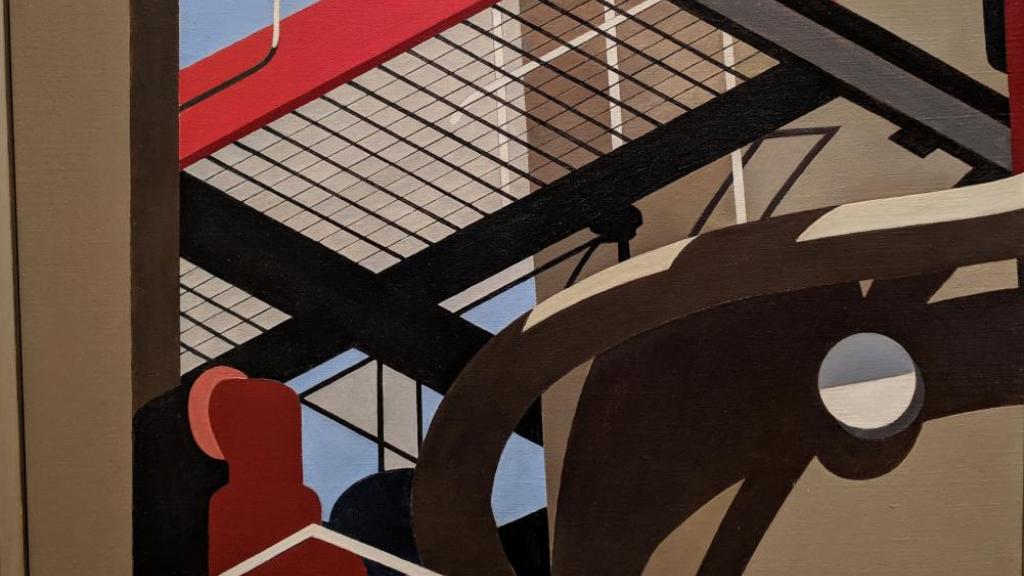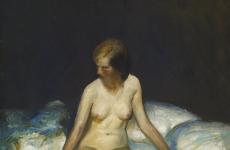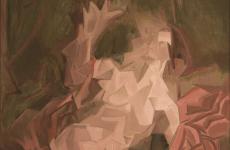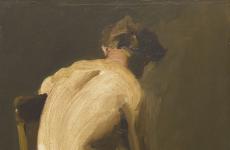Charles Sheeler
Charles Sheeler initially trained as a portrait painter at the Pennsylvania Academy of the Fine Arts in Philadelphia. After traveling to Italy and France in 1909, he became interested in the work of Paul Cézanne. After returning to Philadelphia, Sheeler eventually took up photography. His work as a photographer served as the foundation for the development of his Precisionist painting style, which emphasized regularity, planar surfaces, and an application of paint that denied the artist’s hand.

In the mid-1940s, Charles Sheeler photographed a rubber plant in West Virginia, focusing on industrial details, including exterior pipes, cylinders, and cat-walks. The paintings he made from these photographs demonstrate his interest in overlapping shapes and shadows—in this picture, the function of the machinery is shown as being secondary to their appearance. In Sheeler's view, his industrial pictures were less about labor than about “the perception of order in the visual world…and its expression in purely plastic terms.”
Collection of Barney and Barbro Osher





